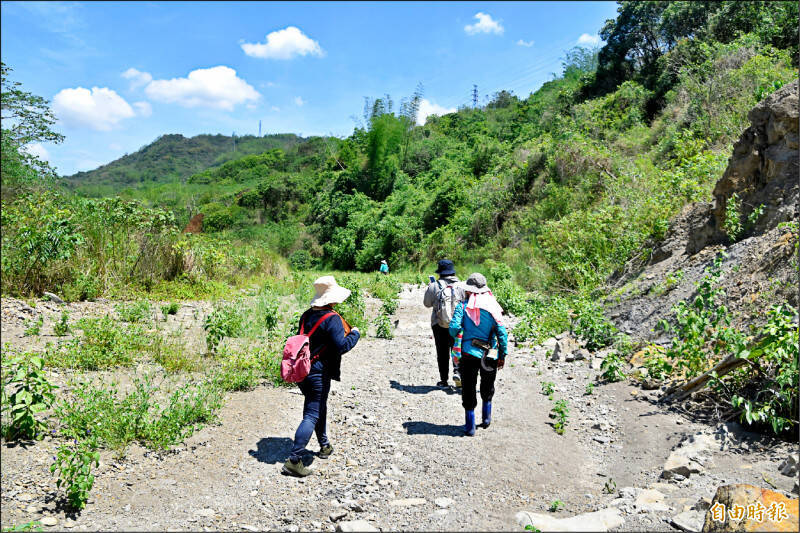From Fangliao in Kaohsiung's Shanlin District to Shennong Temple in Liugui District, the "Houshan South Ridge Ancient Trail" is a secret mountain trail used by "mountain mice" to steal teak trees in the past.
(Photo by reporter Su Funan)
[Reporter Su Funan/Special Report] There are several hidden mountain trails and ancient trails in the mountainous areas of Liugui, Shanlin, and Meinong in Kaohsiung. Among them, the "Houshan South Ridge Ancient Trail" from Fangliao in Shanlin District to Shennong Palace in Liugui District is 150 Years ago British photographer John.
John Thomson's path to record the customs and customs of southern Taiwan in the 19th century is also a secret mountain path where residents of mountain villages who lived in poverty before sixty years ago took risks as "mountain mice" and illegally felled teak trees.
The total length of the South Ridge Trail in Houshan is about 7 kilometers. The road has to cross valleys, cross shallow mountains, and pass through forests. A hundred years ago, it connected the two major river villages of Laonong River and Nanzixian River. The commercial and cultural interaction with the Han people and Hakka people is the only way to go, but at present, the roads along the way are full of barren grass and the mountains and rivers are sparsely populated.
Please read on...
In Shanlin Xinhe Community, formerly known as "Xiaofenwei", in the 1950s and 1960s of the Republic of China when the economy was struggling, the entire Zhuangtou, regardless of gender, age or age, were "mountain mice". The teak wood is secretly carried down the mountain and sold to the lumber factory, and it is cashed in to supplement the household.
Teak is originally produced in mountainous areas such as Myanmar and Thailand. Because of its hard texture and rich oil, teak was introduced to Taiwan in large quantities by the Japanese for planting a hundred years ago. From Meinong Shuangxi to Shanlin Fangliao, Jinxing, Xiaofenwei, and Liugui, there are teak forests all over the mountains and valleys.
85-year-old Zhuang Longsheng stood by the Fangliao River, pointed to the opposite mountain and said, "Those two mountains are what the locals call "big vine" and "small vine". 60 years ago, the mountain was still a lush forest. , the Japanese planted tall and straight "rouge trees" (another name for teak), but after the Japanese left, they were cut down!"
Elder Yang Wangu recalled that teak is the raw material for high-grade wooden furniture. At that time, the price of a tree of teak purchased by the timber company was equivalent to dozens of times the wages, which attracted a large number of outsiders to covet and flock to steal the forest; Lai Chunyi said that hundreds of people go up the mountain to cut teak every day, some have already carried the wood down from the mountain, and some are just getting ready to go!
Every day before dawn, the children in the village go up the mountain to saw wood, pick up the wood, and then use the stream to release the wood to the downstream villages. To avoid taking the wrong wood, they will mark the trunk; the adults form their own "Mountain Mouse Group" , took an ax and a saw to the mountain to log, the elder Wu Heyang still remembers that once he met the Baolin team (predecessor of the Forest Service) in the Dagongzhan mountain area by chance. Although there were only 3 of them, they showed their ax and other guys, and showed righteousness to Paulin's team, both hard and soft. Fortunately, the intimidation strategy worked and they were able to retreat.
In just a few years, the large amount of teak planted by the Japanese was almost completely cut down in the 1960s. In recent years, the Xinhe community has conducted oral interviews, led by seniors, and returned to the scene of robbery to speak out. Be a mountain mouse" community theater, recreating the legends in the mountains of the year is amazing!
